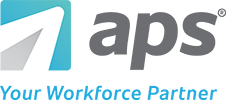As you embark on the task of writing a grant report for your organization, remember that you are capable of this. Even if it’s your first time, with the right guidance, you can navigate the grant reporting process with confidence and compile a comprehensive report without complications.
Whether you’re a first-timer or a seasoned grant writer, this article is here to guide you through the grant reporting process. We’ll provide a complete step-by-step guide, discuss requirements, guidelines, and how to write a compelling report. You’re not alone in this, we’re here to support you.
We will also explain how payroll and accounting software can streamline the grant summary report process. By the end of this article, you will know how to gather data efficiently and confidently write a grant report.
What is Grant Reporting?
A grant report is one of the legal obligations for grantmakers to approve funding. Grant reporting is usually a prerequisite for organizations to inform their funders about the following:
- Programs and activities they’ve been running
- How they’ve been utilizing the grant funds
- Key performance indicators (KPIs) or the unquantifiable impact achieved
Grant reports typically comprise written narratives demonstrating how you’ve been using these funds and convincing your grantors to continue furnishing your company with grants. These narratives help tell the story of your organization to your funders. Grant report writing lets them understand your organization’s needs and how the funds would benefit the grantor.
Who Needs to Create a Grant Report?
Grant reports are essential components of grant management and are required by various types of organizations that receive funding. Nonprofits, educational institutions, faith-based organizations, and other entities that rely on grants must create detailed reports to provide additional information to their funders.
These reports provide accountability and transparency, showing that the funds are being used as intended. Furthermore, comprehensive grant reports can support future funding opportunities by demonstrating the successful utilization of previous grants and the impact achieved.
Why is Grant Reporting so Important?
Grant reporting is not just a legal obligation, it’s a crucial part of your organization’s journey. It’s your chance to show your funders the impact of their support and the wise use of the funds. Even if it’s not required, submitting a grant progress report is a powerful tool for accountability and transparency.
Producing a well-crafted grant report will show funders that your organization is organized and can keep track of the funding provided. The narrative aspect of your grant report also offers the opportunity to build a rapport with your grantors. This relationship can influence the possibility of securing additional funding for your organization and positively impact the overall strategy, informing funding decisions.
While many other factors are involved in securing grants, a solid grant report format is the backbone of proving your organization’s dedication and accountability. Furthermore, you can reuse your grant summary report to furnish your organization’s annual reports and newsletters.
Grant Reporting Requirements
Two things are needed to write a compelling grant utilization report: the narrative and financial components.
The Narrative
The narrative provides a detailed status of the project or program that used the grant funds. Within the grant report’s narrative, take the time to thank your grantors for supporting your organization. Depending on the funder, you may need to include information like:
- The reason your organization required the project or program
- Key people involved
Estimated timetable for grant activities - Anticipated obstacles and your organization will address them
You should also outline your organization’s activities with the grant and compare them to the activities you mentioned your organization would do in your original grant proposal. Finally, don’t forget to add the results and impacts of these funded activities that have benefited your organization and your funder.
The Financials
The grant writing process requires precision with your financial information, so it’s crucial to have all relevant statements accessible and up-to-date. Some funders may have different foundation reporting requirements or formats for the financial statements in your procedure.
However, your financials section should show how you’ve spent the funds based on your nonprofit’s original grant proposal. Manually compiling these details is time-consuming, and the information may not be accurate or up-to-date.
Accounting and payroll software with a comprehensive reporting system can significantly streamline the grant reporting process. These tools can help you automate the gathering of financial data, so you meet grant reporting requirements efficiently and accurately.
Accounting Software
You will also need to add financial statements in your grant report to show your grantors how you’ve been spending the funds. You will need to compile all expenses tied to the grant funds, including employee time.
Ideally, your accounting software should record these numbers so you can cross-check the initial numbers against your actual spending. Cloud-based accounting software like Sage Intacct or Blackbaud gives you instant access to complete financial statements for the grant reporting process.
Payroll Software
We know using accurate financial data in grant reporting is essential, but you also need to track expenditures like employee time. Payroll software can help bridge this gap. A payroll solution offering dimensional time tracking allows employees to allocate their hours worked to grants. This data is a critical element of grant reporting, documenting the accountability of the funds.
For example, an employee can clock in to grant A for 40% of their time and grant B for 60%, so 100% of their hours worked are accounted for between the two grants.
Many payroll solutions offer integrations with various accounting platforms for a more automated process. These integrations sync employee time data by grant to your accounting platform so your financial statements include all related grant expenditures.
Grant Reporting Guidelines
Specific grantors may have different grant reporting guidelines. Still, grant reporting best practices include diligently tracking expenditures related to grant funds, checking the spending against financial statements, and staying on top of your deadlines.
Diligently Track Spending
One way to make your grant reporting process more manageable is to consistently and diligently track your organization’s spending. Ideally, a grant expenditure report is an ongoing process that should begin as soon as the grant is received.
If the person writing the grant report changes within the year, the expenditures should be available in your organization’s accounting software. Make sure you’re also tracking employee time spent on grants and storing this data in your accounting software. This process ensures that grant money expenditures are tracked and recorded.
Check Spending Against Financial Statements
This part of the grant reporting process is crucial. Cross-check your spending’s initial numbers against your organization’s actual expenditures to ensure an accurate representation of the numbers.
Most funders will require that you explain the variances between the budgeted amount and the actual amount spent on any activities in your grant reports. Be honest and accurate in your reporting.
For example, if you mentioned spending $2,000 on a particular activity but spent $2,400, then explain why. If you spend less than anticipated, it is advisable to do the same.
Also, be sure to keep documentation to back up your expense claims. Payroll and accounting software simplifies this process as all documentation is stored securely in the cloud. Online financial recordkeeping will also be useful should another person step in to continue the grant reporting process.
Stay On Top of Deadlines
As with anything, it’s essential to stick to your deadlines. It shows your grantors that you’re responsible and can help secure more funding for your organization. If you cannot process the grant report because of activities or events that have not yet occurred, give ample notice to the funder and state why. With sound reasoning, they will typically understand the situation.
Looking to Bridge the Gap Between Employee Time and Grant Spending?
How to Write a Grant Report
Now that you’re well-versed in the foundation of requirements and reporting practices, it’s time to start on your grant report. Below is an overview of the process of putting together a grant progress report.
Don’t Rely Solely on Numbers
Although financial statements are an essential part of your grant report to showcase accountability, don’t fill your grant report with just numbers. This approach relays a cold and calculative disposition. Instead, show your grantors how personable your organization is and why they should continue funding it.
Thoroughly Describe Program Activities
Here’s where the narrative aspect of your report comes into play—for every activity or event that you’re spending grant funds on, describe as vividly as you can how the funding has enabled your organization to achieve it.
Sharing the human aspect of the program activities helps funders see firsthand how their grant money is used and its impact. For example, include pictures or a video of participants at the event. Aim to tell a compelling story of how the funds have helped your organization achieve its goals.
Quantify Results When Possible
If you can quantify the results of the activities you’ve been spending under the grant, mention them in your grant reports. Detail any specific benchmarks or KPIs met as a result of this program. For example, if a nonprofit organization’s goal was to feed 10,000 homeless people during a soup kitchen for Christmas, and they achieved it, be sure to mention that within your grant summary report.
Acknowledge Possible Improvements
Consequently, if your nonprofit did not meet its KPIs, be honest and explain why. Mention areas for improvement and where you can aim to succeed. It is typical not to achieve goals immediately, as long as you know which areas require improvement. This transparency shows that your organization is considering making the most of the grant money.
Include Next Steps
You may have yet to secure your next round of funding, but you should be confident and assume that you will. Include details of how you plan to execute activities using future grant funds.
If your project is long-term, mention how your organization plans to sustain it, its anticipated outcomes, or further iterations of the project. This will show your grantor that you’re already thinking ahead and that your organization is ready for another round of funding.
Did You Know We Have a Native Integration With Sage Intacct?
Grant Report Example
It is time to compile all the information and narratives you’ve collated into the final grant report. If your funders have a specific grant reporting template or format, you should follow that.
However, if they don’t have a reporting template, here is a generic grant progress report example you and your organization can reference. If you’re unsure what type of information and level of detail to include when creating your grant utilization report, here is a sample grant report form. Leveraging a grant report example will make writing your grant report easier without starting from scratch.
How APS Can Simplify Grant Reporting
The grant report writing process can be long and arduous, especially when keeping tabs on your financial reports. Partnering with a payroll provider like APS makes it easier to provide accurate financial information in your grant reports.
We specialize in working with businesses, like nonprofits, educational institutions, and faith-based organizations, that are often required to submit grant reporting. Our cloud-based platform helps grant-funded organizations unify their payroll and finance data with the following options:
- APS Dimensions: With dimensional time tracking, organizations can allocate employee time to grants in the APS system. Employees can clock into a grant dimension to monitor time spent per grant accurately. This information can be exported to any accounting system and used in grant reporting.
- Sage Intacct Integration: Our native and automated integration syncs dimensional information between APS and Sage Intacct. This automation allows organizations to allocate employee hours to grants for a more accurate account of expenditures in grant reports.
Contact APS today about how our unified payroll and HR software can help your organization produce more accurate financial reports to help with your grant reporting.
Sources
- Guide to Better Grant Reporting & Accurate Financials
- Grant Reporting: 10 Key Strategies for Supporting Your Mission and Serving Grantees
- How to Write Grant Reports [Template]
- 8 Grant Reporting Best Practices
- The Importance of Grant Writing for Non-Profits
- 7 Tips for Writing An Exceptional Grant Report





